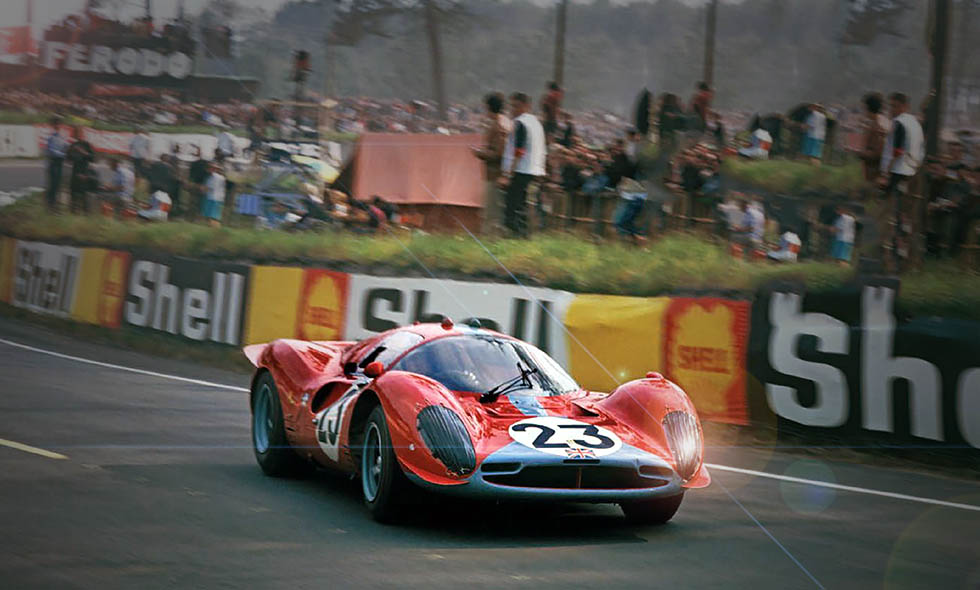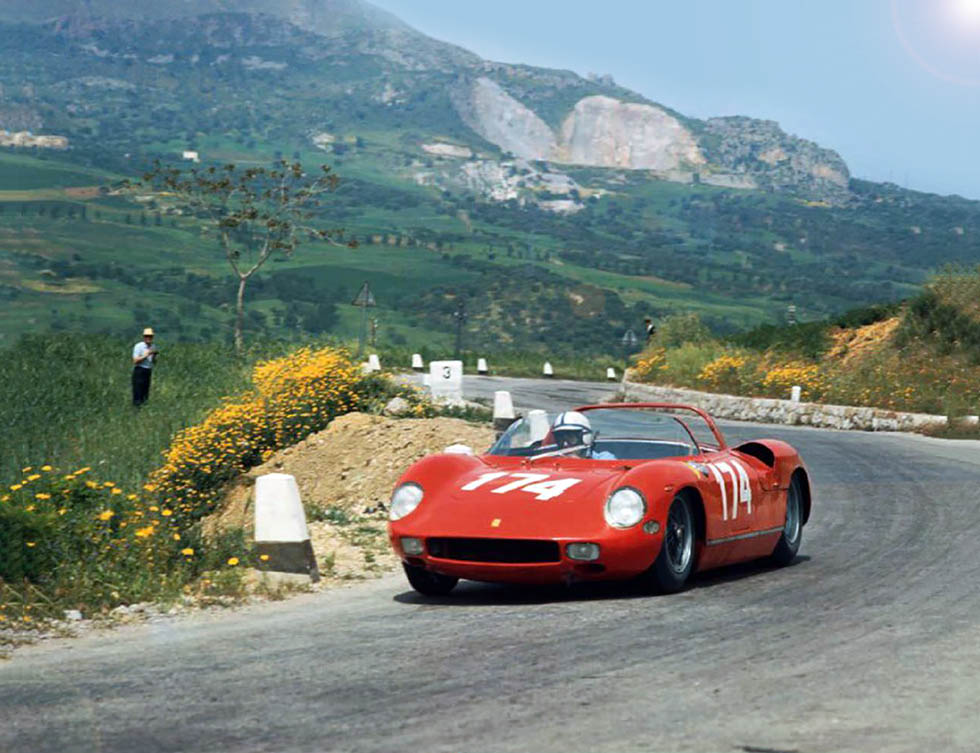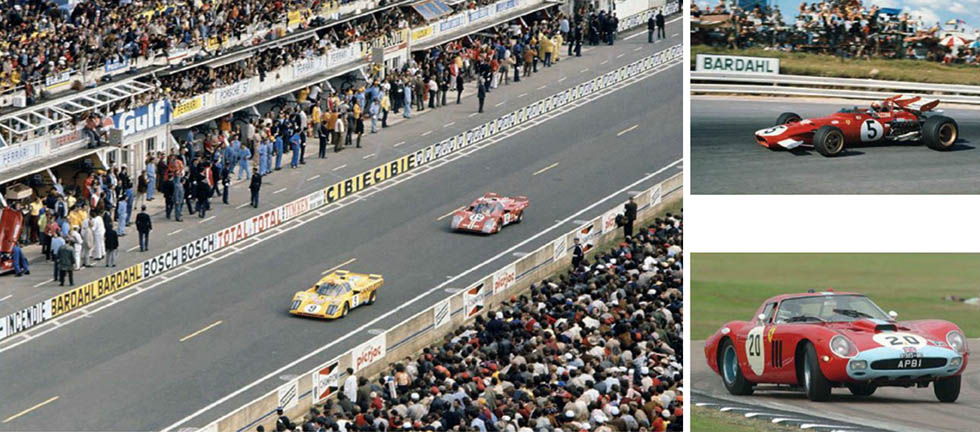
Ferrari’s champion. A panel of the world’s foremost experts chooses Maranello’s best car. The 335S has its supporters, but what would racers and industry experts choose as their greatest Ferrari ever? Mick Walsh and James Page find out. Photography LAT.
BEST OF THE BEST
Lord March
“It’s pretty obvious and it’s really a car that I should own because no other Ferrari evokes Goodwood in such a special way. The 250GT SWB represents the most glamorous race, the greatest driver, and a very special entrant – the Tourist Trophy, Stirling, Rob Walker – plus that stylish colour scheme. I’ve been offered the car several times but never had the resources to afford it. I’ve ridden in 2119GT [the 1960 TT winner] with Paul Vestey, but never driven it. I’m thrilled that Ross [Brawn] now owns it because he’s so enthusiastic about the car, but I’ll make do with Doug Nye’s superb book.”
David Cottingham
“The four-cylinder cars are special to me, particularly the 1956 860 Monza ‘0602’. I was lucky to get ‘0602’ from Pierre Bardinon and, although it looked in a sad state, it turned out to be a sound car with fantastic history. Fangio, Castellotti, Hawthorn, Musso, de Portago and Collins all raced it. Bruce Lavachek found the original engine and did a generous deal just because he wanted to see it reunited with the car. “By ’56, the design was really sorted. The brakes are limited but the handling is better balanced than the V12s. Like the 250GTO, it gives you the same feeling of confidence. It also looks as good as it drives, and I sold it only when the bank called in our overdraft in 1991! “I’d love to get my hands on it again, but the figures are crazy these days…”
David Piper
“The Ferrari 330 P3/4 was a wonderful car. To replace my 365P2, I bought ‘0854’ from Maranello Concessionaires – we ran it through 1967 and ’68. Initially, we struggled to get the performance because it was a carburettor car and finished only seventh in the BOAC 1000km with Richard [Attwood] co-driving. It was no match for the works P4s or the Chaparral 2F, but, once we’d got the engine sorted and stripped some weight, it was competitive and fantastic to drive. “I teamed up with Jo Siffert for a few races, and won the Swedish Grand Prix at Karlskoga in 1968. The P3/4 handled so well. Torquey engine, superb steering and gearchange as quick as a 250LM; it was a brilliant package. The looks were sensational, too, but sadly it eventually burnt out at East London. Later, Chris Cord rebuilt it in America as a Spider and drove it around Los Angeles. What a street car!”
David Piper wasn’t the only one to rate the gorgeous P3/4. Herbert Müller and Jean Guichet shared this one at the 1967 Le Mans 24 Hours.
Simon Kidston
“Ferrari? I have a love/hate relationship with it: on one hand I love the romance, passion and nostalgia it evokes. On the other, the endless marketing hype and Machiavellian business machine behind the modern brand are a turnoff. But if there’s one car I have to own before it’s too late, one overriding ambition as a collector, it’s got to be a Ferrari 250LM. The looks: it’s swoopy mid-1960s Italian glamour at its best. The sound: a wailing V12 soundtrack to stir the soul. And the history: the last Maranello machine to win at Le Mans, against all odds. Best of all, it’s not an obvious choice. Who wants to follow the crowd? Give me chassis 6025 (the 1965 Geneva Salon car) and I’m blasting it on the road to somewhere exotic with a good restaurant in time for aperitivi…”
Chris Rea
“As a boy, I had a faded photo of a 246P on my bedroom wall. It was taken at the old Modena test-track. With its revolutionary (for Ferrari) layout, ‘sharknose’ front and tailfin, it looked fantastic. During 1961, that V6 and tubular chassis proved superb on tortuous road circuits, particularly the Targa. My childhood hero Wolfgang von Trips won in Sicily in 1961, which makes it extra special. We’re building a replica around an original engine, and Simon Bish at GTO Engineering is doing an amazing job. With luck, it might be finished for a ‘sharknose’ display at Goodwood alongside the F1 156s.”
Tony Brooks
“I never really adjusted to rear-engined cars, so, for me, the ultimate front-engined Grand Prix car is the 1959 246. The previous year’s Vanwall wasn’t the easiest thing to drive and required a very precise style. The Dino, however, was closer to a 250F but better balanced on faster circuits. It had a lovely gearbox and the V6 engine was strong, but you didn’t drift it in the same way. On tight tracks, Lotus and Cooper had the edge, but you could really show off around Reims [below].
“My great regret is that I never got the chance to race the Dino at Spa because the Belgian GP was cancelled in 1959. That was a favourite circuit and we possibly had the edge for a win – and the championship. The German GP wasn’t at the Nürburgring that year, either, which was frustrating. Neil Corner later let me test his Dino at Silverstone, which brought back good memories.”
Nick Mason
“This is like owning a restaurant and someone asking you which is your favourite place to eat. It would be strange to choose a car I don’t own. For me, it has to be the 250GTO, and the fact that I’ve kept mine for 40 years proves how special it is. I judge cars by how much I use them, and the GTO has been regularly driven on the road and track. It’s all very well having an ex-Michael Schumacher F1 car, but how often can you get out to tighten your neck muscles? The GTO is superbly balanced in every way. Steering, brakes, handling, engine and looks – there’s no standout feature because they are brilliantly matched.”
Neil Corner
“I’ve been lucky to have owned three 250GTOs, and they were superbly balanced with lovely gearboxes and great steering. But the ultimate driving experience for me is a single-seater and, with twice the power-to-weight ratio, my old Grand Prix Dino (chassis 0007) was very special. “When Ferrari sold the Dino to Pat Hoare, it was fitted with a Testa Rossa V12 for the Tasman series, and I bought it in 1978. It was the fastest front-engined car I’d driven, and it was fantastic through quick corners. You could take Abbey at Silverstone as flat as a kipper but you couldn’t afford to come across another car.
“The gearbox was better than a 250F and the brakes were superb. It wasn’t easy to drive, but you felt really good after setting quick times. I once tried Albert Obrist’s V6 Dino, which felt better balanced but sounded like a wet fart. After one practice session in my car, I took my helmet off for the final lap – the sound was incredible.”
John Surtees
“How do you judge ‘the greatest’? Looks? Performance? I won the F1 title in the 158, but that wasn’t the most consistent of cars. You want emotion, though, and on that basis the P cars were important to me. I won my very first race for Ferrari, in a 250P at Sebring in 1963. I’d done a lot of testing and was down to drive with Ludovico Scarfiotti, but then [team manager] Eugenio Dragoni said that he was giving our car to NART so that Pedro Rodríguez could drive it.
“We had to drive the one car that hadn’t been tested. We spent the whole race getting gassed by fumes because some of the panels weren’t properly fixed, but we won. Then we heard that the result had been protested. Luckily, the organisers’ lap chart matched the one that my then-wife Pat had kept, so the result stood. Who’d protested it? Dragoni! That rather set the tone for our relationship. All of those P cars were great, though – very enjoyable to drive.”
Max Girardo
“My approach has been to focus on the greatest Ferrari I’ve ever driven, so I’ll go for the 1957 250 ‘Pontoon Fender’ Testa Rossa. With a 300bhp V12, the car is impressively fast, with delightfully light steering and great throttle response. Every detail is minimal yet beautiful, and the car oozes charisma. And therein lies its greatness – it’s unquestionably one of the finest of all sports-racing Ferraris, it’s easier and more rewarding to drive than the iconic 250GTO.”

Ferrari legend Surtees – here in a 250P on the 1963 Targa Florio – put a lot of work into the development of the fabled P series of sports cars.
Alain de Cadenet
“Although it was love at first sight when I saw my first 312PB, it’s the 512M I drove at Le Mans that year that provided me with the ultimate thrill. Being handed a 630bhp beauty and being told that the track went clockwise was the extent of pre-practice preparation. But at least I’d got to know the car when the conversion was done from an ‘S’ to an ‘M’ at the race shop in Maranello.
“It’s not really a big car. The V12 was just under 5 litres and had a 4-valve-per-cylinder, twin-overhead-cam layout with Lucas fuel injection. Then there were the 15in Campagnolo wheels with serious rubber on the road. Surprisingly forgiving, and totally stable on the Mulsanne at 225mph.
“That was my first outing at Le Mans, and I had only one eye working after a Targa accident. That magnificent machine looked after me and gave me one of the greatest rides of my life. We didn’t finish, but came fourth at Watkins Glen later in the year.”
De Cad’s yellow 512M howls past the pits at Le Mans in 1971, his first drive in the 24 Hours.
Terry Hoyle
“The 315 has to be the greatest, particularly with that fantastic four-cam engine, but my personal favourite is the 330LMB. It was the fastest frontengined Ferrari and the first to break 300kph at Le Mans. Of the four built, it has to be ‘4725SA’ because it has links to my days at Maranello Concessionaires and also to Pierre Bardinon – his collection was the eighth wonder of the world for me. Mike Salmon and Jack Sears drove it to fifth at Le Mans in 1963 and took a class win.The power, torque and sound are fantastic, and the 330LMB inspired me to build a special Lusso with a 4-litre engine. Perfect for a fast trip across France to Mas du Clos.”
Doug Nye
“Where roofed-in Ferraris are concerned, of course, everything about the GTO is a delight and, unlike many who prefer to drive the SWB, for me the GTO’s supreme steering response and comfort-blanket nature confirm its towering stature. With sports cars, I found almost all of them pretty much primitive hunks of junk, but the V12 ones have lovely engines. Where single-seaters are concerned, the Supreme Fazzazz of All Time just has to be Mauro Forghieri’s absolute masterpiece – the superbly integrated design icon 1970-’71 Ferrari 312B. Ooh, my word…”
Paul Vestey
“My Eureka moment came in 1967 when Carlos Gaspar and I ran the ex-Ronnie Hoare 275GTB/C (‘9035GT’) in the Monza 1000km. The May weather was glorious, and as you creamed past the pits on the way down to the Curva Grande at about 155mph, you could see the Alps in the distance, when – wham, wham! – the two works 330P4s of Lorenzo Bandini and Mike Parkes came howling past going about 40mph faster and launched themselves into the fast right-hander. No chicanes then.
“More excitement followed a few – very few, actually – laps later. Running the highly civilised GTB/C round the banking at maybe 160mph, the two P4s again lined up to overtake, but this time both changed up into fifth gear just as they came past my left ear and rapidly departed into the distance. Magnificent.
“What a car – wonderful 4-litre four-cam injected engine and the most beautiful alloy body, created by Piero Drogo’s Carrozzeria Sports Cars company, with curves and creases in perfect harmony. Surely the high-water mark of Italian craftsmanship in every way.”
Gregor Fisken
“It’s a tough call between a 330LMB and the Dino 246 SP, but the GT just has the edge because I have great memories of sharing ‘4381’ with Harry Leventis on the 2000 Tour Auto. The 330 has more power than a GTO, but also really delivers downstairs with bags of torque. Power may sell cars, but torque wins races. “The Tour Auto really underlined what a great all-rounder it is, both strong on the hills and capable of winning races, but it will also happily tootle through French villages on the open road. In the end, we were beaten overall only by two GT40s. It doesn’t quite have the balance of a GTO, which you can hold at the most amazing angles – with the 330LMB, you have to be more committed – but the power from that 4-litre V12 is truly special. It’s the best beast I’ve ever driven.”
Steve Cropley
“For me, it has to be the 250LM. I select it for entirely selfish reasons. When I was a lad in Australia, there was a famous LM owned and campaigned by a Sydney-based team called Scuderia Veloce, and it was my monthly delight reading about the exploits of a hero-driver called Spencer Martin in this fabulous car. Years later, I was allowed to drive an LM owned by Lord Bamford, a sensational experience. He even let me drive it to the pub for lunch!”
Lord Bamford
“Ever since I went to Le Mans in the 1960s, the ’64-style 250GTO has been a favourite. The conversion by Scaglietti looks more modern than the original. With the wider nose, lower roof and shorter tail, it’s perfect from all angles. Really aggressive.
“Five years after seeing Innes Ireland and Tony Maggs drive ‘4399GT’ at Le Mans, I was lucky enough to buy that very car, and have kept it ever since. It won the TT at Goodwood with a ’62-type body before it was sent back to the factory to become the first ’64-style GTO. We’ve done pretty much everything with it during the past 47 years, including rallies all over the continent, racing, and taking it to the pub. All the greatest cars should be good for that. It’s very noisy, though, which is fantastic for 100 miles but tiring for 1000.”

De Cad’s yellow 512M howls past the pits at Le Mans in 1971, his first drive in the 24 Hours.





